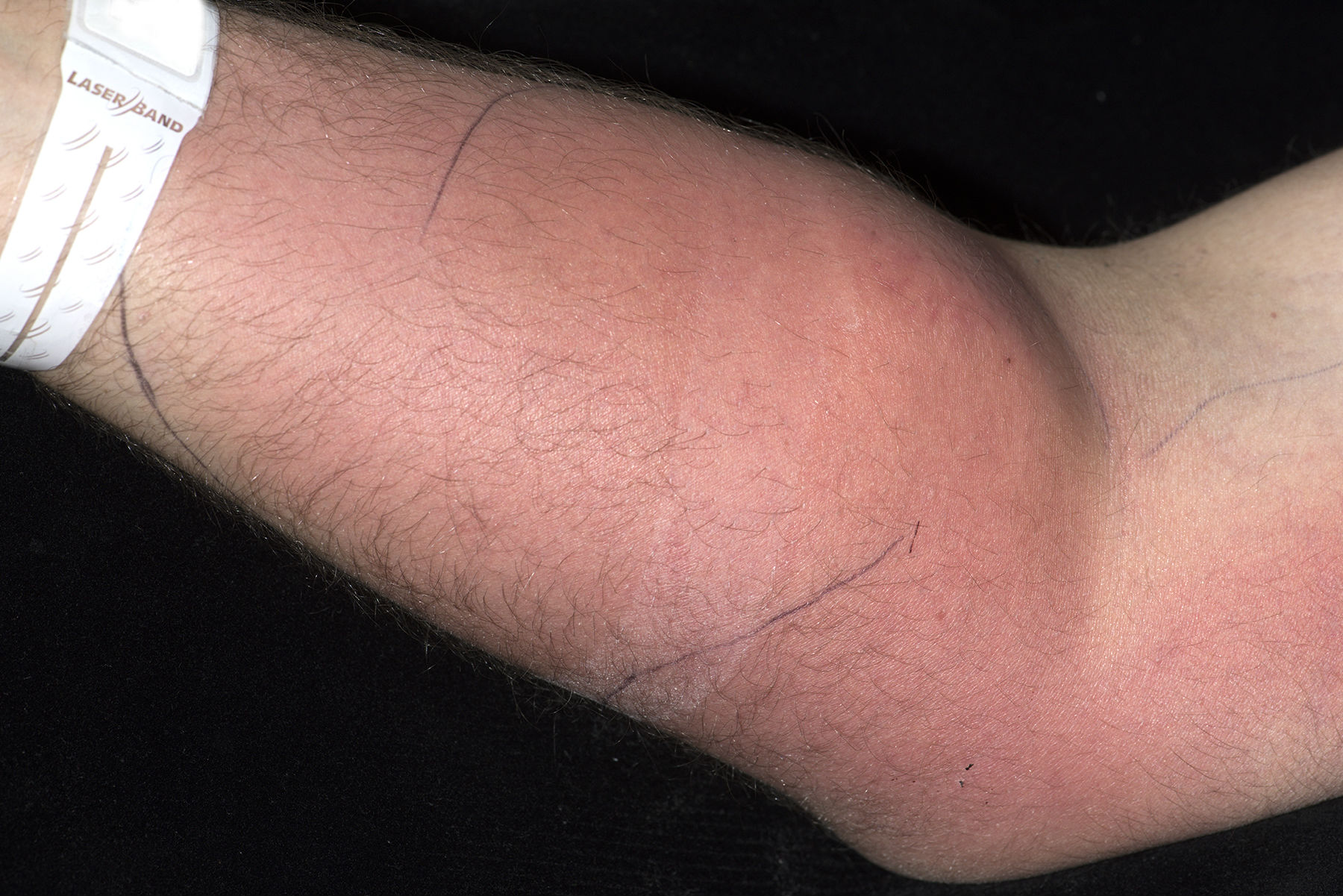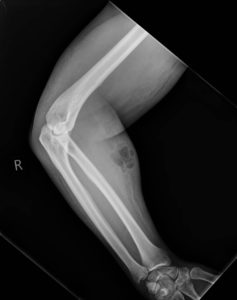“Semenly” Harmless Back Pain: An Unusual Presentation of a Subcutaneous Abscess
Dunne L¹, Murphy E¹, Rutledge R¹
1.Tallaght University Hospital, Tallaght, Dublin 24
Abstract
Aims
We report, with review of the literature, the case of a patient who developed a subcutaneous abscess after intravenously injecting his own semen in an attempt to treat longstanding back pain. He had devised this “cure” independent of medical advice.
Methods
A review of EMBASE, PubMed, google scholar and the wider internet was conducted with an emphasis on parenteral semen for the treatment of back pain and for other medical and non-medical uses.
Results
There were no other reported cases of intravenous semen injection found across the medical literature. A broader search of internet sites and forums found no documentation of semen injection for back pain treatment or otherwise.
Conclusion
While suicide attempt by intravenous injection of harmful substances is well described, this unique case demonstrates risks involved with innovative treatments prior to clinical research in the form of phased trials inclusive of safety and efficacy assessments.
Introduction
We report, with review of the literature, the case of a patient who developed a subcutaneous abscess after intravenously injecting his own semen in an attempt to treat longstanding back pain. He had devised this “cure” independent of medical advice. This is the first reported case of semen injection for use as a medical treatment.
Case Report
A 33 year old male was seen complaining of severe, sudden onset lower back pain. He reported lifting a heavy steel object 3 days prior and his symptoms had progressed ever since. This gentleman had a history of chronic low back pain without neurology. Thorough physical exam of the upper and lower limbs revealed an erythematous papule with a central focus on the medial aspect of his right upper limb. His ASIA score for neurology was normal and non-contributory. The patient disclosed that he had intravenously injected his own semen as an innovative method to treat back pain. He had devised this “cure” independent of any medical advice. Upon further interrogation of this alternative therapy, he revealed he had injected one monthly “dose” of semen for 18 consecutive months using a hypodermic needle which had been purchased online. Upon this occasion the patient had injected three “doses” of semen intra-vascularly and intra-muscularly. The erythema extended medially along his upper limb over the course of the following 24 hours as seen in figure 1.
Figure 1. Cellulitis and oedema of the right forearm

It became indurated around the minuscule entry wound where he had failed multiple attempts at injecting the bodily fluid causing an extravasation of semen into the soft tissues. Bloods tests demonstrated a C-reactive protein of 150mg/L and white cell count of 13×109/L. The patient was immediately commenced on intravenous antimicrobial treatment after seeking advice regarding appropriate cover. A radiograph of the limb was obtained to exclude retained foreign body. This demonstrated subcutaneous emphysema as seen in figure 2.
Figure 2. Plain film x-ray of the right upper limb showing subcutaneous emphysema with associated soft tissue swelling and oedema

This patient’s back pain improved over the course of his inpatient stay and he opted to discharge himself without availing of an incision and drainage of the local collection.
Discussion
A comprehensive review of EMBASE, PubMed, google scholar and the wider internet was conducted with an emphasis on intravenous semen injection for the treatment of back pain as well as for other medical and non-medical uses. Although there is a report of the effects of subcutaneous semen injection into rats and rabbits¹, there were no cases of intravenous semen injection into humans found across the literature. A search of more eclectic internet sites and forums found no other documentation of semen injection for back pain treatment or other uses. Attempts at intravenous and arterial injection of harmful substances such as mercury, gasoline, charcoal lighter fluid, hydrochloric acid and hydrocarbon2-7 are well described and are generally carried out in attempted suicide as opposed to the case detailed above in which the patient was aiming to relieve physical discomfort. While it is the first ever described case of intravascular semen injection and associated abscess in the medical literature its lessons can be applied on a broader scale; the dangers of venepuncture when carried out by the untrained layperson are highlighted as well as the vascular and soft tissue hazards surrounding the attempted injection of substances not intended for intravenous use. The case also demonstrates the risks involved with medical experimentation prior to extensive clinical research in the form of phased trials inclusive of safety and efficacy assessments.
Conflict of Interest
None declared
Corresponding Author
Dr. L Dunne
Adelaide and Meath Hospital,
Tallaght,
Dublin 24
Email: [email protected]
References
1) Bacsich P, Sharman A, Wyburn GM. The Effects of the Injection of Human Semen into Female Animals. BJOG 1945; 52: 334-8. 2) Gopalakrishna A, Pavan Kumar TV. Intravenous injection of elemental mercury: A report of two cases. Indian J Plast Surg. 2008;41(2):214-218. 3) Wale J, Yadav PK, Garg S. Elemental mercury poisoning caused by subcutaneous and intravenous injection: An unusual self-injury. Indian J Radiol Imaging. 2010;20(2):147-149. 4) Fink K, Kuehnemund A, Schwab T, Geibelzehender A, Bley T, Bode C, Busch J. Suicide Attempt by Intravenous Injection of Gasoline: A Case Report. J. Emerg Med. 2010 Nov;39:618-622 5) Dabir Vaziri N, Jeminson-Smith P, Wilson A.F. Hemorrhagic Pneumonitis After Intravenous Injection of Charcoal Lighter Fluid. Ann Intern Med. 1979;90:794–795. 6) Hsieh C, Lin G. Corrosive injury from arterial injection of hydrochloric acid. Am J Emerg Med. 2005 May;23(3):394- 7) Nelson ME, Nasr I. Parenteral Hydrocarbon Injection and Associated Toxicities: Two Case Reports. West J of Emerg Med. 2013;14(5):431-434.
P857
